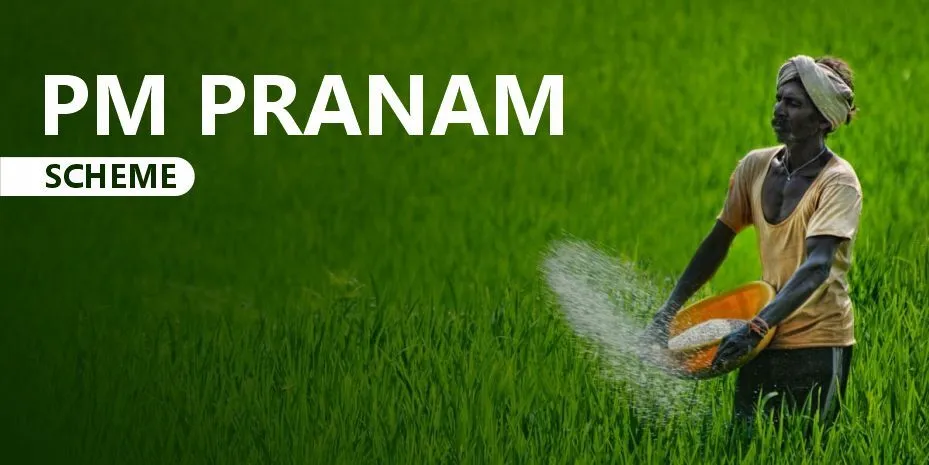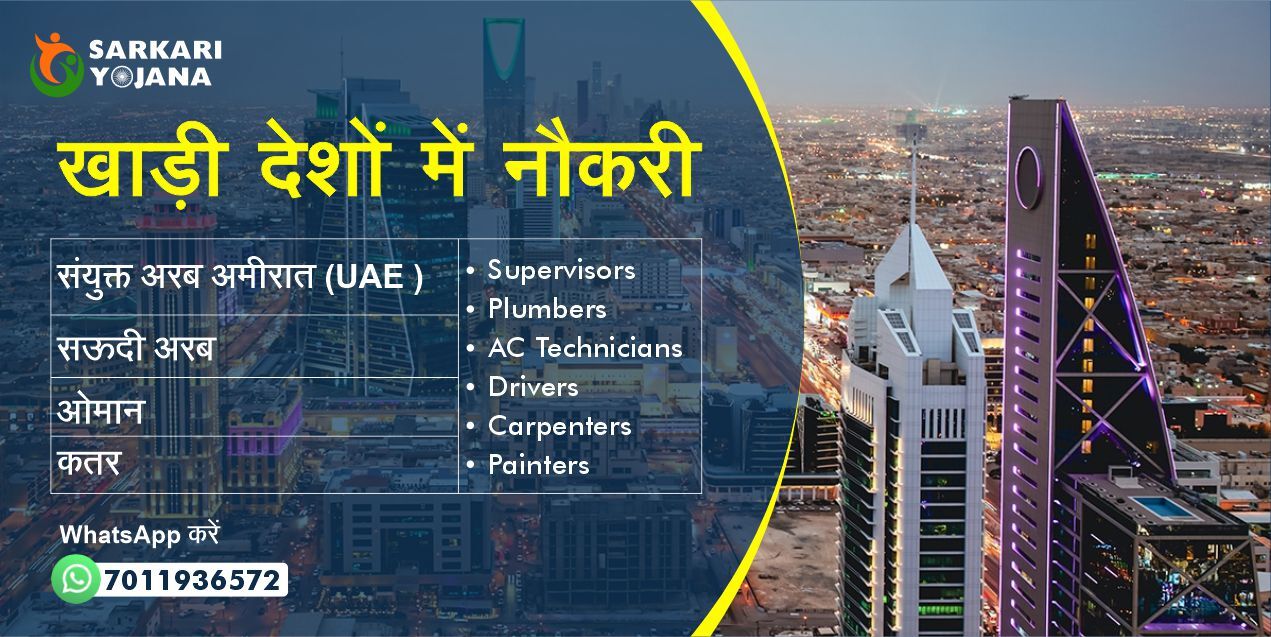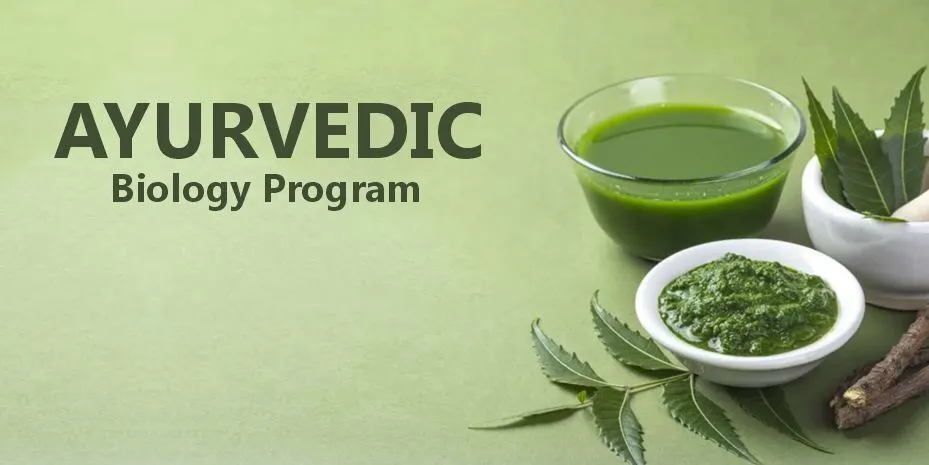Using alternative nutrient sources for agricultural applications is encouraged by the Pradhan Mantri Promotion of Alternate Nutrients for Agricultural Management (PM PRANAM) government programme. The plan intends to raise agricultural yield, enhance soil fertility and health, and lessen reliance on chemical fertilisers. Another important objective of the programme is to promote sustainable agricultural techniques. On February 1, Union Finance Minister Nirmala Sitharaman announced that the PM Promotion of Alternative Nutrients for Agricultural Management Yojana (PM Pranam) programme will be introduced in the country.
Farmers can get financial aid from PM PRANAM to buy alternative nutrition sources including organic fertilisers, bio-fertilizers, and green manure. To educate farmers about the negative impacts of chemical fertilisers on the environment and human health, the programme also provides subsidies for these nutrient sources and runs awareness campaigns and training programmes.
Another crucial component of the programme is the promotion of locally and indigenously produced agricultural resources. By the introduction of this programme, the government wants to relieve farmers’ financial burdens associated with the purchase of pricey chemical fertilisers and advance sustainable agricultural practices throughout the nation.
Contents
- 1 What is Pradhan Mantri (PM) Pranam Yojana 2023?
- 2 Main Objectives of Introducing PM Pranam Yojana 2023
- 3 Benefits of PM Pranam Scheme for Farmers & Environment
- 4 Uses of Fertilizer Usage in India Current Status (Challenges & Impacts)
- 4.1 Overview of the Country’s Current Fertilizer Uses by Farmers
- 4.2 Important Links and Contact Details for PM PRANAM Scheme
- 4.3 FAQs Related Pradhan Mantri (PM) Pranam Yojana 2023
- 4.3.1 What is PM PRANAM stand for?
- 4.3.2 What advantages does the PM PRANAM Scheme offer?
- 4.3.3 Who are eligible for the PM PRANAM Yojana?
- 4.3.4 What are Alternative fertilisers?
- 4.3.5 How do I submit a PM PRANAM application?
- 4.3.6 What does the PM PRANAM scheme’s financial aid entail?
- 4.3.7 How will the PM PRANAM plan be tracked and assessed?
- 4.3.8 Is training offered as part of the PM PRANAM scheme?
- 4.3.9 In Conclusion (Final Words)
What is Pradhan Mantri (PM) Pranam Yojana 2023?
The Indian government established the Pradhan Mantri Promotion of Alternative Nutrients for Agricultural Management (PM PRANAM) programme to advance sustainable agricultural methods throughout the nation.
An important portion of the people in India depends on agriculture for their living, and it also contributes to the GDP of the nation. Yet overuse of chemical fertilisers has harmed the soil and decreased agricultural output. These problems are addressed and the use of alternative fertiliser sources for agriculture is encouraged under the PM PRANAM Yojana 2023.
Indian Agriculture’s Importance
Almost 50% of the population works in agriculture, which also accounts for 17% of India’s GDP. Agriculture is important to the Indian economy. Food security is a major concern for the nation, which has a population of nearly 1.3 billion.
Unfortunately, the usage of chemical fertilisers has resulted in environmental contamination, decreased soil fertility, and soil deterioration. This has caused a decrease in agricultural output and an increase in farmers’ input expenses.
Encouraging Alternative Sources of Nutrients for Agriculture
Promoting sustainable agricultural methods that lessen reliance on chemical fertilisers and encourage the use of alternative nitrogen sources is crucial to addressing the issues encountered by farmers. The PM PRANAM Plan 2023 is a start in the right direction.
The programme offers farmers financial aid and incentives to encourage them to use organic fertilisers, bio-fertilizers, and other non-traditional sources of nutrients. The potential of the PM PRANAM Scheme 2023 to advance sustainable agricultural practises in India will be examined in this article along with the scheme’s numerous facets.
Key Points of Pradhan Mantri (PM) Pranam Scheme 2023
Here are a few key points of the Pradhan Mantri (PM) Pranam Scheme which will help you to understand better about this plan:
- Almost 50% of the workforce in India is employed in the agricultural sector, which also accounts for 17% of the nation’s GDP.
- Chemical fertiliser overuse has resulted in soil deterioration, decreased soil fertility, and environmental contamination, which has decreased agricultural output and raised farmers’ input costs.
- Farmers that use organic fertilisers, bio-fertilizers, and other alternative nutrient sources are given financial aid and incentives under the PM PRANAM Yojana 2023.
- The programme aims to lessen reliance on artificial fertilisers, increase soil fertility and health, and support sustainable agricultural methods.
Main Objectives of Introducing PM Pranam Yojana 2023
The programme seeks to enhance soil health, boost agricultural output, and lower cultivation costs. The PM PRANAM scheme’s goals and objectives, as well as how it is anticipated to benefit farmers and the environment, will be covered in this article.
The following are the major goals of the PM PRANAM scheme:
- To encourage the use of alternative nutrients, including as fertilisers derived from organic and natural sources.
- To lessen reliance on chemical fertilisers, which may be detrimental to the environment and the health of the soil.
- To enhance the fertility and health of the soil, which will raise agricultural output.
- To lower the expense of farming for farmers.
- To improve environmental protection and sustainable agricultural methods.
The PM PRANAM Yojana may help farmers and the environment in a number of ways by promoting the use of alternative nutrients, making agriculture more profitable and long-term sustainable.
Government Aim for Starting PM Pranam Scheme 2023
The PM PRANAM scheme’s goal is to promote the use of non-chemical nutrients while minimising the usage of chemical fertilisers. The programme hopes to accomplish the following advantages for farmers and the environment by doing this:
- Increased Crop Productivity:
The application of alternative fertilisers can raise the fertility and health of the soil. Higher yields and better-quality food in turn may lead to higher market pricing for the produce.
- Lower Cost of Production:
Natural nutrients are frequently less expensive than artificial fertilisers. The PM PRANAM plan seeks to lower the cost of cultivation for farmers and increase the viability and profitability of agriculture by encouraging their usage.
- Environmentally friendly:
Chemical fertilisers have the potential to negatively impact biodiversity, water quality, and soil health. The PM PRANAM plan seeks to encourage sustainable agricultural practices while reducing the usage of artificial fertilisers, creating a cleaner and healthier environment.
- Improved Farmer Income:
The PM PRANAM plan intends to boost farmer income by enhancing crop yield and lowering the cost of cultivation, resulting in higher living conditions for farmers and their families.
The Indian government has taken a huge step to encourage organic farming methods and lessen the usage of artificial fertilisers via the PM PRANAM Scheme. The plan’s goals and objectives are to enhance soil health, boost agricultural output, lower cultivation costs, and encourage environmental preservation.
Key Features of PM Pranam Yojana for Farmers in India
The Indian government’s Pradhan Mantri Promotion of Alternative Nutrients for Agricultural Management (PM PRANAM) programme promotes the use of non-traditional chemical fertilisers as an alternative to conventional chemical fertilisers.
The programme seeks to enhance agricultural output, lower cultivation costs, and enhance soil health. The PM PRANAM scheme’s salient characteristics will be covered in this section.
- Financial Support for Farmers
As part of the PM PRANAM programme, the government offers financial support to farmers in order to encourage the use of substitute nutrients. Farmers that employ alternative nutrition sources like organic and natural fertilisers are given financial support in the form of subsidies and incentives. The programme seeks to lower farmers’ cultivation expenses and increase the viability and profitability of agriculture.
- Alternative Nutritional Source Subsidies
The PM PRANAM programme offers farmers compensation for alternative nutrition sources. Farmers are encouraged to use natural and organic fertilisers since the government offers a 50% rebate on their price. The programme also offers a 75% discount on the cost of installing vermicomposting systems, which may provide organic fertilisers.
- Training programmes and awareness campaigns:
The PM PRANAM programme attempts to educate farmers about the advantages of employing non-traditional nutrients. The initiative runs awareness campaigns and training sessions for farmers to inform them about organic and natural fertiliser use as well as sustainable agricultural methods. Also, the government educates farmers on how to make organic fertilisers, compost, and vermicompost.
- Promotion of Organic Agriculture:
The PM PRANAM programme encourages farmers to employ natural and organic fertilisers, which helps to advance organic agriculture. Also, the programme offers assistance to farmers who desire to transition to organic agricultural methods. The government offers financial support for organic food certification and encourages the development of organic farming clusters.
- Monitoring and Evaluation of the Program:
To gauge the efficacy of the PM PRANAM programme, monitoring and evaluation are in place. The programme is overseen at the state and federal levels, and assessments are carried out often to gauge its effectiveness. In order to enhance the program’s operation and handle any potential problems, the government also takes comments from farmers into consideration.
Benefits of PM Pranam Scheme for Farmers & Environment
The programme seeks to enhance soil health, boost agricultural output, and lower cultivation costs. We’ll talk about the advantages of the PM PRANAM system in this section.
- Environmental Benefits:
The PM PRANAM plan encourages the use of alternative, ecologically friendly fertilisers including organic and natural fertilisers. Chemical fertiliser usage has the potential to degrade soil, pollute water, and harm the environment. The programme seeks to decrease the usage of artificial fertilisers and promote environmentally friendly agricultural methods.
- Health Advantages:
Farmers and consumers may face health risks as a result of the usage of chemical fertilisers. The PM PRANAM initiative encourages the use of substitute fertilisers that are both safe for farmers and healthful for consumers. The programme also encourages the adoption of organic agricultural methods, which do not utilise pesticides or other dangerous chemicals.
- Economic advantages:
To encourage farmers to employ alternative fertilisers, the PM PRANAM initiative offers financial help and incentives. This lowers the cost of cultivation for farmers, increasing the profitability of agriculture. Also, the programme encourages the use of organic and natural fertilisers, which are more valuable on the market than chemical fertilisers. As a result, farmers earn more money, which helps the agricultural industry expand.
- Social Benefits:
The PM PRANAM programme encourages environmentally friendly farming methods, which are advantageous to the entire neighbourhood. The programme encourages the use of substitute fertilisers, which results in the growth of better crops. This is advantageous to customers and encourages a healthy diet. The programme also encourages the employment of organic agricultural methods, which result in the growth of superior crops. As a result, Indian agriculture’s standing in the global market is enhanced.
- Crop Production Increased:
The PM PRANAM programme encourages the use of alternative fertilisers that enhance soil health and boost crop yield. Natural and organic fertilisers are nutrient-rich and aid in increasing the fertility of the soil. This results in the growth of more productive, healthier crops. The programme also encourages the adoption of sustainable farming methods, which support resource conservation and long-term agricultural production.
Uses of Fertilizer Usage in India Current Status (Challenges & Impacts)
Although fertilisers are necessary for agricultural productivity, their overuse may have a negative impact on both the environment and public health. The usage of chemical fertilisers has grown dramatically in India over the past several decades, creating a variety of problems. The use of fertilisers in India today, the difficulties farmers confront, and the effects of chemical fertilisers on the environment and human health will all be covered in this portion of our study.
Overview of the Country’s Current Fertilizer Uses by Farmers
India is the second-largest fertiliser consumer in the world, and chemical fertilisers are increasingly popular there. Government statistics show that from 0.6 million tonnes in 1951 to 30.3 million tonnes in 2019–20, chemical fertiliser use has grown. Many issues have arisen as a result of the over usage of chemical fertilisers.
- Farmers face a number of difficulties:
including soil deterioration, decreased soil fertility, and water contamination due to the over use of chemical fertilisers. This has resulted in lower agricultural output and higher farming expenses for farmers. Also, small and marginal farmers have a hard time affording artificial fertilisers due to their high cost. As a result, fertiliser consumption is unbalanced, with large farms using more fertiliser than small farmers.
- Environmental Effects of Chemical Fertilizers:
The over usage of chemical fertilisers has resulted in a number of environmental issues. Chemical fertilisers damage the soil and water by contaminating them, which causes water pollution and soil deterioration. As a result, both the number and quality of crops produced declined. Chemical fertiliser runoff is another factor in the eutrophication of water bodies, which kills aquatic life.
- Chemical fertiliser usage and human health issues:
The use of chemical fertilisers has also been connected to a number of health issues. Food that has been tainted by chemical fertilisers can cause illnesses like cancer, renal impairment, and reproductive issues. Overuse of chemical fertilisers can also result in the growth of bacteria that are resistant to antibiotics, making diseases more challenging to cure.
Important Links and Contact Details for PM PRANAM Scheme
In order to make the scheme’s execution easier, the government has given interested parties access to crucial connections and contact information. The PM PRANAM scheme’s crucial links and contact information will be included in this section.
Relevant Links:
- PM PRANAM Portal: (Update Soon)
The main website for the programme is the PM PRANAM portal. The webpage offers details about the programme, its goals, and the advantages of using substitute fertilisers. Farmers and stakeholders that are interested in the programme may enter the site to learn more and sign up.
- Department of Agriculture, Cooperation, and Farmers Welfare: https://agricoop.nic.in/
The PM PRANAM plan is implemented by the Department of Agriculture, Cooperation, and Farmers Welfare. To learn more about the programme, its rules, and the application procedure, interested parties should visit the department’s website.
- National Centre of Organic Farming: https://ncof.dacnet.nic.in/
The national organisation for organic farming in India is called the National Centre of Organic Farming. Farmers and other stakeholders interested in adopting organic agricultural techniques can get technical assistance from the centre. Information about organic farming and the PM PRANAM programme may be found on the center’s website.
Contact Details:
- Hotline for PM PRANAM:
The government has established a helpline to support farmers and other stakeholders with questions about the PM PRANAM programme. Call the hotline at 1800-3000-3322 if you have any questions or need assistance with the programme.
- State Agricultural Department:
The PM PRANAM plan must be implemented at the state level by the State Agriculture Department. For details on the programme and how it will be implemented, interested parties can get in touch with the state agriculture departments in their individual states.
- Krishi Vigyan Kendra:
Farmers can receive technical assistance from Krishi Vigyan Kendras (KVKs), which are agricultural extension centres. For information on the PM PRANAM programme and how it is being implemented, interested people may get in touch with their local KVK.
FAQs Related Pradhan Mantri (PM) Pranam Yojana 2023
Here are a few frequently asked questions and their answers related to this Pradhan Mantri Promotion of Alternate Nutrients for Agriculture Management (PM PRANAM):
What is PM PRANAM stand for?
The Indian government has launched the PM PRANAM plan to encourage the use of non-chemical fertilisers and decrease the usage of chemical fertilisers in agriculture.
What advantages does the PM PRANAM Scheme offer?
The PM PRANAM plan will lower farming costs, boost agricultural output, safeguard the environment and human health, and promote soil health.
Who are eligible for the PM PRANAM Yojana?
The PM PRANAM plan is open to farmers, farmer-producer associations, and other agricultural stakeholders.
What are Alternative fertilisers?
Organic or natural fertilisers generated from plant, animal, or mineral sources are considered alternative fertilisers. Compost, vermicompost, bio-fertilizers, and green manure are some examples of alternative fertilisers.
How do I submit a PM PRANAM application?
Via their respective state agriculture departments or online on the PM PRANAM site, interested farmers and stakeholders can apply for the PM PRANAM programme.
What does the PM PRANAM scheme’s financial aid entail?
Farmers and stakeholders can get financial help under the PM PRANAM plan equal to up to 50% of the price of alternative fertilisers.
How will the PM PRANAM plan be tracked and assessed?
At the federal and state levels, the PM PRANAM programme will be monitored and assessed. To determine the effectiveness of the programme and make the necessary adjustments, a monitoring and evaluation committee will be established.
Is training offered as part of the PM PRANAM scheme?
Absolutely, in order to encourage farmers and stakeholders to utilise alternative fertilisers and organic agricultural methods, the PM PRANAM plan includes awareness efforts and training programmes for them.
In Conclusion (Final Words)
To encourage sustainable agriculture in India, the PM PRANAM plan is an essential endeavour. We intend to provide farmers and other stakeholders with a better understanding of the programme, its advantages, and how it will be implemented by responding to some frequently asked questions. For additional information on the programme and its rules, interested parties can get in touch with their local state agricultural departments or visit the PM PRANAM nearest agriculture office.





